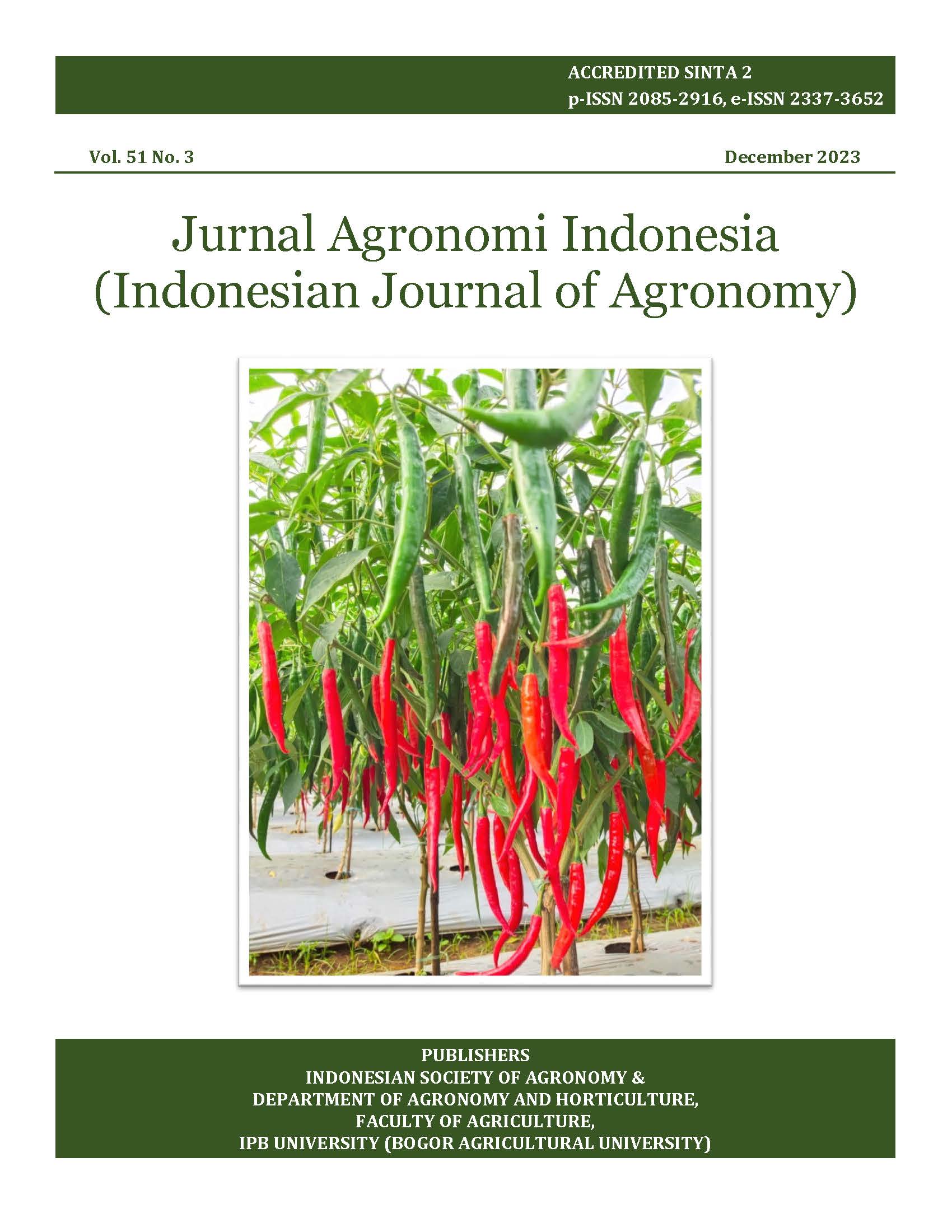Growth and yield responses of two cowpea (Vigna unguiculata L.) varieties on different irrigation levels
Abstract
Cowpea (Vigna unguiculata L.) or kacang tunggak in Indonesian belongs to the Leguminoceae family and is recently still a less commercial crop. This study was conducted to determine irrigation volume based on pan evaporation and its effects on the growth, yield, and irrigation water use efficiency (IWUE) of cowpea (Vigna unguiculata L.) grown in the plastic house. The amount of water applied was based on pan evaporation (Eo). This experiment used a split-plot randomized complete block design; the main plot was cowpea varieties (Albina and Uno), and subplots were irrigation volume (0.75, 1.50, 2.25, and 3.0 Eo). The data were subjected to analysis of variance; then, the means were compared using Duncan’s Multiple Range Test (DMRT). All tests were considered significant at p < 0.05. The experimental results showed that the water requirement during the vegetative phase for 5 consecutive weeks for the Albina variety was 2.91 Eo, 3.0 Eo, 3.0 Eo, 3.0 Eo, and 2.11 Eo; for the Uno variety was 3.0 Eo, 3 .0 Eo, 3.0 Eo, 2.94 Eo, and 2.10 Eo, respectively. For the Albina and Uno varieties at the generative phase, the plant water requirements were 1.66 Eo and 1.79 Eo, respectively. In cowpea farming, the optimum treatment for efficient water use or lowest usage of water was determined to be 2.25 Eo of irrigation volume combined with the Albina variety. Cowpea growth and productivity are significantly impacted by irrigation volume.
Keywords: Albina variety; evaporation; kacang tunggak; Uno variety; water efficiency













